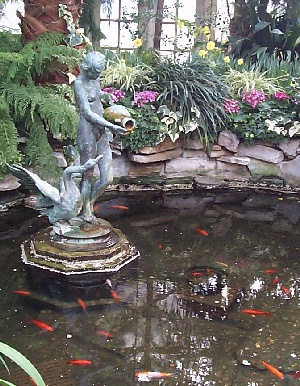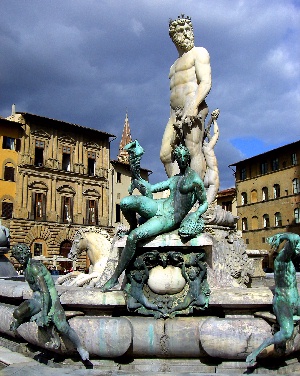| Fountains in Art History
The Art History Archive - Sculpture This Website is Best Viewed Using Firefox Fountains: Sculptures of Water, Bronze & Stone
By Charles Moffat - January 2010. What is the functional purpose of the modern water fountain? People certainly don't drink out of it. It is there purely as decoration, as a show of grandeur. There was a time when they were functional, providing water for drinking and bathing, but in the last 2 millenia fountains have been increasingly used for decoration in public and private places, either by themselves or as part of the architecture, they are in essence a sculptural element. If you visit a conservatory (ie. Allan Gardens in Toronto) you might happen upon a statue of Leda and the Swan (from the Greek myth). Chances are likely its a fountain like the one on the right. Depending on the particular fountain it might be turned off when you see it, but its still meant to function sculpturally when you see it. Often the fountain is designed to function within the architecture around it and is thus designed to harmonize with its surroundings, but has to stand out simultaneously so that people can stop and appreciate it. Note: One of my favourite shows for architecture is a BBC television series called Dreamspaces. Its essentially a documentary series about architecture and interior design, but it frequently features water fountains as part of the design. Several episodes have a deluge of fountains, like when they visit Vegas and Morocco. It should also be noted some fountains are more jets (like a man-made geyser), some are pools, others are designed to be part of landscape architecture (ie. garden fountains), and even a few are designed to be musical. Our focus here however will be the fountain within art history, ie. the more sculptural variety.
Often the result of public commissions fountains the artist(s) and craftsmen who made them are frequently unknown or not famous, but no less worthy of praise for artworks that are challenging on an engineering level. Early examples of fountains as art are often decorated with figures of people (often gods, angels, nymphs, mermaids, naiads and mythical creatures), animals or plants, essentially symbols of life since water is a necessity of life. On the right is the "Fountain of Neptune" from the Piazza della Signoria in Florence (1560-1575) which features the Roman god of the Sea with several naiads (water dryads). It should be noted that urinating cherubs are basically a cliche in the modern fountain industry. Quite a few fountains have been commissioned by churches, ie. the fountains of St. Peter's Square in Rome, and as such usually depict angels or other mythical/real creatures from Christian mythology (ie. the Leviathan, dragons or the whale that swallowed Jonah). For more examples see the Christian Art History Archive. In Islam fountains are more of a necessity because worshippers are expected to wash before attending prayer, and thus many mosques feature public fountains where people can wash up. These fountains are functional, but are designed to look both geometric and harmonious with the surroundings, giving a feeling of peace and tranquility like the one below.
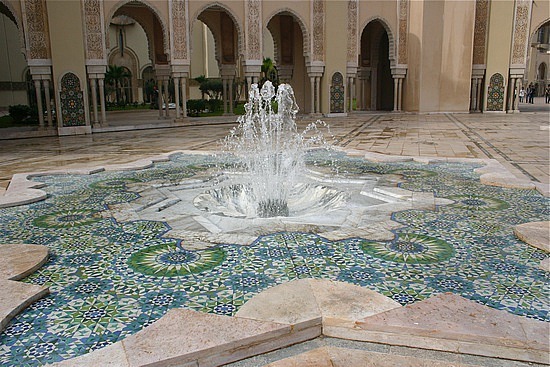 If you travel through Asia fountains tend to focus more on dragons, tigers or incorporating bamboo for a Buddhist aesthetic. Water features are surprisingly common within Asian homes. In my personal experience of traveling in South Korea buying and keeping sculptures in one's home was quite common, as was having sculptures in front of businesses in an effort to attract attention / give people the sense of prestige and professionalism.
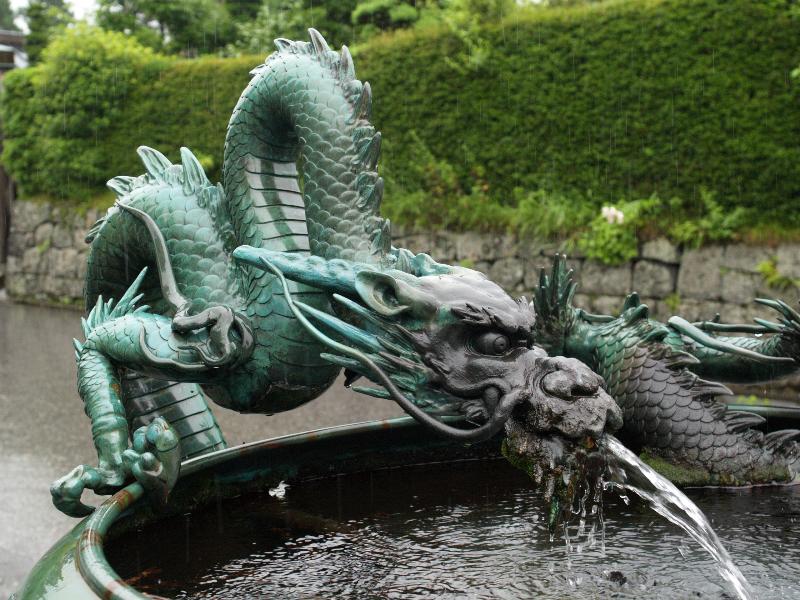 Some fountains are more like reliefs, built into a wall or attached to a wall and thus known as wall fountains. A common design is that of a basin, essentially for hand washing or possibly for drinking. Many such wall fountains are reliefs, designed to look a bit like a miniature waterfalls that comes down either in cascades or a constant sheet of water. Indoor fountains (or any kind of water feature) inside one's home is essentially a sign of wealth and decadence. It was a primary feature of Frank Lloyd Wright's signature building the Kaufmann Residence, also known as Fallingwater, seen below, which has a stream go right through the building and a waterfalls on the far side. Unfortunately the Kaufmann Residence has needed frequent repairs because the building is now falling apart.
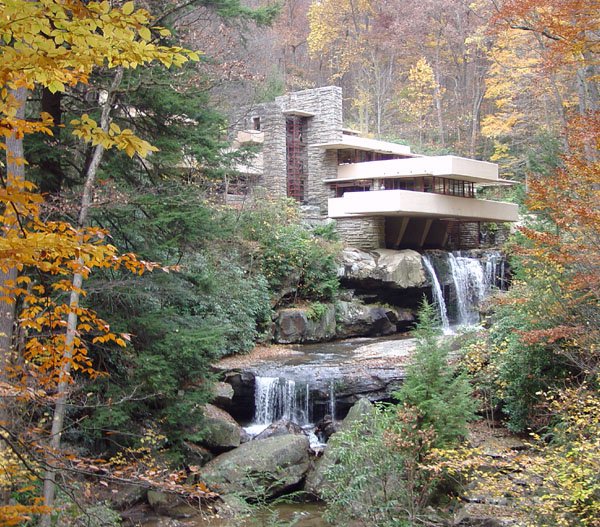 The most famous sculptor to try his hand at fountains is Gian Lorenzo Bernini. His works dot the landscape of Rome and he is arguably the greatest fountain maker of all time. Below is Bernini's "Fountain of the Four Rivers" (1648-51). It is unfortunate that the internet cannot accurately portray sculptures of this magnitude. You would really have to see it in person to truly understand and appreciate it.
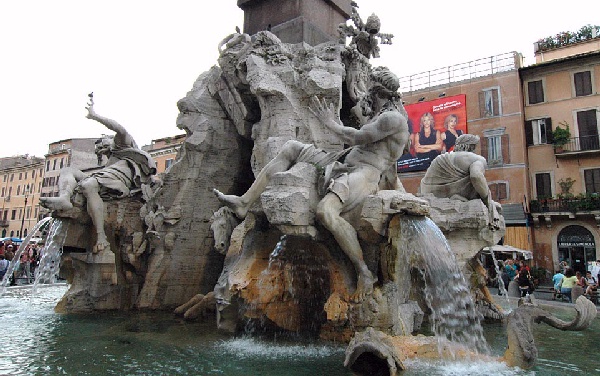 Below is another famous fountain, the Crystal Fountain, made for the London Great Exhibition of 1851. It stood inside the Crystal Palace from 1854 to 1936 until the building was destroyed in a fire. Designed by Follett Osler, it was made of four tons of pure crystal glass and was the world's first glass fountain. Very few artists since then have even attempted to make a crystal fountain.
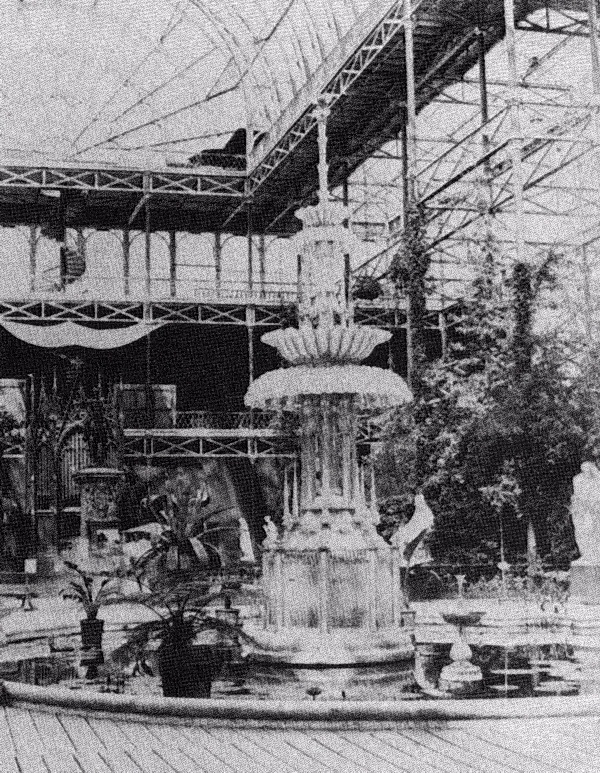
|
|
|||
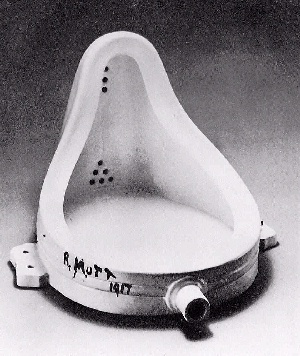
Lastly I would be negligent if I failed to mention Marcel Duchamp's "Fountain" from 1917, a ready-made art piece from the Dada art period. While technically not a "water fountain" in the sense it doesn't have any water or plumbing, it does make the argument that all toilets are essentially water fountains purely as the result of their functional usage. In theory if toilet manufacturers simply put more artistic effort into making their products they could make a toilet which is both functional and a work of art. It remains to be seen however. The modern toilet is a rudimentary device with little or no design merit and I imagine very few artists would want to actively engage in such "artsy fartsy" activity as to make one that is beautiful to behold. As Marcel Duchamp pointed out even "R. Mutt" could make a toilet, denoting the idea that its a craft, not a work of art, and as such doesn't really deserve to be in One could make the argument that if people can make designer sinks they should be making designer toilets to match. The trick of course, like all art, is that most people wouldn't be able to afford such luxury. But isn't that the point with fountains in general? They're not usually meant to be functional. They're there as decorative sculpture, a sign of wealth, prestige and decadence. And sometimes they're just beautiful. See Also Strange Sculptures from Around the World
|
||||
